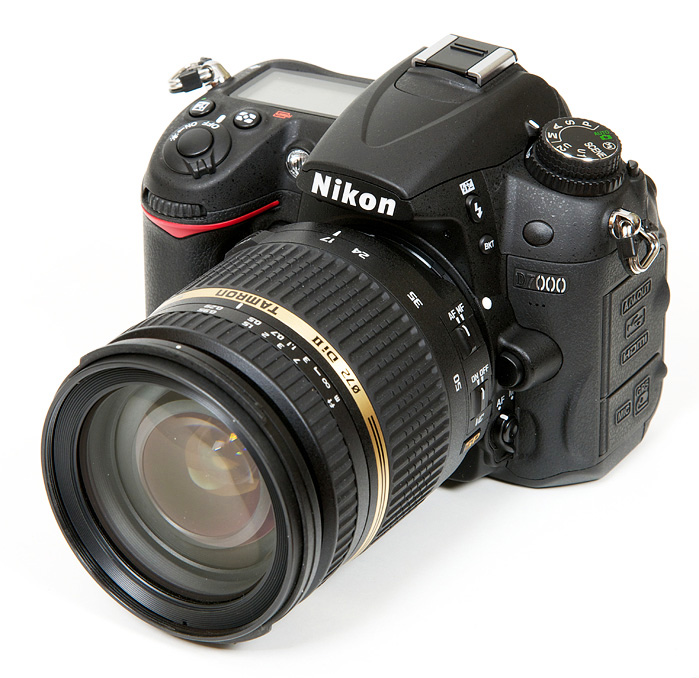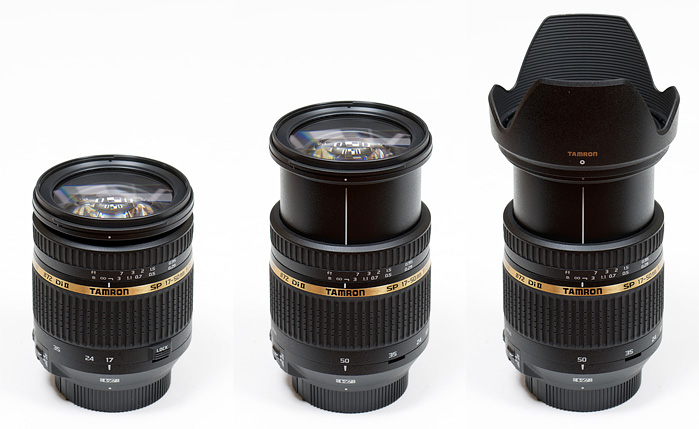Tamron Sp Af 17-50mm F/28 Xr Di-ii Vc Ld Aspherical (if) Nikon Review
- Get link
- X
- Other Apps
Folio 1 of 3
Review by Markus Stamm and Klaus Schroiff, published June 2011
Special thanks to Andrea Halter for providing the lens!
Introduction
When information technology comes to standard zooms for crop cameras, Nikon offers a range of stabilized, but not overly fast lenses. On the other manus their high end AF-South 17-55/2.eight offers a large aperture and superb build quality, but it lacks VR and carries a rather hefty cost tag. Unlike Canon, which offers the undisputed king in this lens class with the EF-South 17-55/2.eight USM IS, Nikon does not offer a lens that combines speed, stabilization and high finish performance in a single lens.This leaves this segment open to 3rd party offerings. Sigma brought their OS ("Optical Stabilizer") to a number of lenses and Tamron was next in line with their VC ("Vibration Compensation").
Tamron outset introduced VC in their lineup of extreme zoom lenses - the Tamron AF xviii-270mm f/iii.5-vi.iii VC and AF 28-300mm f/3.v-half-dozen.3 VC. Regarding their sales volume these are their key lenses then they seem to be pretty much convinced that their VC organization is gear up for prime time. The Tamron AF 17-50mm f/ii.8 SP XR Di II LD Aspherical [IF] VC reviewed here is even more ambitious considering large aperture stabilized lenses are even less forgiving with respect to quality control bug (VC/VR is technically nothing else but a controlled decentering). The pricing is very competitive at around 400EUR/550US$.
In this review we will accept a look at how the lens performs on our current DX exam camera, the Nikon D7000.

The build quality is typical for a consumer grade zoom lens although Tamron SP ("Super Functioning") lenses are actually intended to target the high finish market. Most of the lens is made of proficient quality plastics based on a metallic mount. The zoom ring operates quite smoothly. The focus ring has merely a very short focus path so accurate manual focusing is a bit on the hard side. It is somewhat anachronistic that the focus ring however rotates in AF mode. The lens extends when zooming towards the long end of the zoom range and the supplied petal-shaped hood adds a piddling actress length.
Cheers to internal focusing, the forepart element does not rotate so using a polarizer remains easily possible. The lens is quite a bit bigger compared to its non-VC sister lens although however a lot smaller than the rather huge Nikon AF-S 17-55/2.8.

The Tamron AF 17-50mm f/two.eight VC nonetheless relies on a conventional AF micro-motor (which makes it compatible also with the motorless entry-level Nikon DSLRs). Speed-wise this is not a problem considering of the already mentioned short focus path (turning the focus ring by a ~40 degrees traverses the whole focus range) but AF operations are noticeable (noise-wise). The AF accurateness was ok and non an consequence in the field with our examination DSLR.
Regarding the VC Tamron claims an efficiency of upwardly to 4 f-stops. While we can confirm that the VC works very well, we recommend fugitive to exploit this to the max due to the increasing number of outliers in field weather condition.
| Specifications | |
|---|---|
| Equiv. focal length | 25.5-75 mm (full format equivalent) |
| Equiv. discontinuity | f/4.2 (total format equivalent, in terms of depth-of-field) |
| Optical construction | 19 elements in 14 groups inc. 3x aspherical elements, 2x LD (Low Dispersion) drinking glass element, 2x XR (Extra Refractive) chemical element |
| Number of discontinuity blades | 7 (rounded) |
| min. focus distance | 0.29 m (max. magnification ratio ~one:four.8) |
| Dimensions | fourscore 10 95 mm |
| Weight | 570 g |
| Filter size | 72 mm (non-rotating) |
| Hood | supplied, petal-shaped |
| Other features | Vibration Control (Optical Image Stabilizer) |
Source: https://www.opticallimits.com/nikon--nikkor-aps-c-lens-tests/642-tamron175028vcdx
- Get link
- X
- Other Apps


Comments
Post a Comment